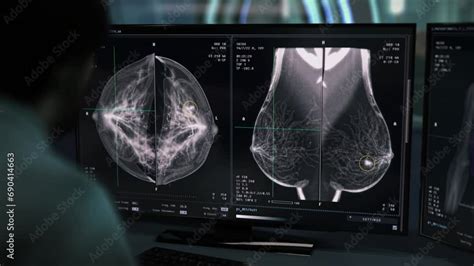Breast cancer is one of the most common cancers affecting women worldwide, accounting for approximately 11% of all new cancer cases. Early detection is crucial for effective treatment and improving survival rates. Mammography has been the gold standard for breast cancer screening for decades, and recent advances in mammography technology have significantly enhanced its accuracy and effectiveness.
The Importance of Early Detection
Early detection of breast cancer can significantly improve treatment outcomes and survival rates. According to the American Cancer Society, the five-year survival rate for women with stage I breast cancer is approximately 99%, compared to 27% for those with stage IV cancer. Mammography plays a vital role in detecting breast cancer at an early stage, allowing for timely intervention and treatment.
Advances in Mammography Technology
In recent years, mammography technology has undergone significant advancements, leading to improved image quality, increased accuracy, and enhanced patient comfort.
Full-Field Digital Mammography (FFDM)
Full-field digital mammography (FFDM) has replaced traditional film-based mammography in many breast imaging centers. FFDM offers several advantages, including improved image quality, reduced radiation dose, and faster examination times.

Benefits of FFDM
- Improved image quality and contrast
- Reduced radiation dose
- Faster examination times
- Enhanced patient comfort
Tomosynthesis (3D Mammography)
Tomosynthesis, also known as 3D mammography, is a recent advancement in mammography technology. This technique involves taking multiple low-dose X-ray images of the breast from different angles, which are then reconstructed into a three-dimensional image.

Benefits of Tomosynthesis
- Improved detection of small tumors
- Reduced false positives
- Enhanced characterization of lesions
- Improved patient comfort
Contrast-Enhanced Mammography (CEM)
Contrast-enhanced mammography (CEM) is a newer technique that involves injecting a contrast agent into the breast tissue to highlight areas of interest. CEM is particularly useful for women with dense breast tissue, where traditional mammography may be less effective.

Benefits of CEM
- Improved detection of tumors in dense breast tissue
- Enhanced characterization of lesions
- Reduced false positives
- Improved patient comfort
Computer-Aided Detection (CAD) Systems
Computer-aided detection (CAD) systems are software programs that analyze mammography images to detect potential abnormalities. CAD systems can help radiologists detect breast cancer at an early stage, improving treatment outcomes.

Benefits of CAD Systems
- Improved detection of small tumors
- Reduced false negatives
- Enhanced characterization of lesions
- Improved patient comfort
Artificial Intelligence (AI) in Mammography
Artificial intelligence (AI) is being increasingly used in mammography to improve image analysis and detection of breast cancer. AI algorithms can help radiologists detect abnormalities at an early stage, improving treatment outcomes.

Benefits of AI in Mammography
- Improved detection of small tumors
- Reduced false negatives
- Enhanced characterization of lesions
- Improved patient comfort
Future Directions in Mammography Technology
Mammography technology is continually evolving, with several new advancements on the horizon. Some of the future directions in mammography technology include:
- Photon-counting mammography: This technique involves using a photon-counting detector to improve image quality and reduce radiation dose.
- Phase-contrast mammography: This technique involves using phase-contrast imaging to improve detection of small tumors.
- Deep learning algorithms: These algorithms can be used to improve image analysis and detection of breast cancer.



Conclusion: Advances in mammography technology have significantly improved breast cancer detection and diagnosis. From full-field digital mammography to artificial intelligence, these advancements have enhanced image quality, reduced radiation dose, and improved patient comfort. As mammography technology continues to evolve, we can expect even more accurate and effective breast cancer detection and diagnosis.
FAQ Section:
What is the difference between digital mammography and film-based mammography?
+Digital mammography uses electronic detectors to capture images of the breast, while film-based mammography uses X-ray film. Digital mammography offers improved image quality, reduced radiation dose, and faster examination times.
Is tomosynthesis (3D mammography) more accurate than traditional mammography?
+Yes, tomosynthesis has been shown to be more accurate than traditional mammography, particularly in detecting small tumors and reducing false positives.
What is the role of artificial intelligence in mammography?
+Artificial intelligence can be used to improve image analysis and detection of breast cancer, reducing false negatives and improving treatment outcomes.
